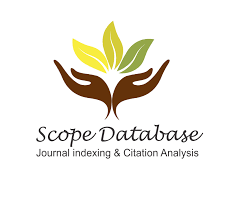Details
An In-Depth Analysis on the Application of Artificial Intelligence Tools and Techniques Achieving Efficacious Marketing
Amardeep Singh Bhullar
California State University, Fresno
Download PDF http://doi.org/10.37648/ijrst.v10i02.010
http://doi.org/10.37648/ijrst.v10i02.010
Abstract
The integration of Artificial Intelligence (AI) into marketing represents a paradigm shift in how businesses approach customer engagement, campaign management, and decision-making processes. This paper provides an in-depth analysis of the diverse applications of AI within the marketing landscape, emphasizing its transformative impact on traditional marketing strategies. AI technologies such as machine learning, natural language processing, and predictive analytics enable marketers to analyze large volumes of data, generate personalized customer experiences, automate repetitive tasks, and optimize campaign effectiveness in real-time.
References
- Adam, M., Wessel, M., & Benlian, A. (2019). AI-based chatbots in customer service and their effects on user compliance. Electronic Markets, 29(3), 447–462. https://doi.org/10.1007/s12525-019-00368-6
- Chaffey, D. (2018). Artificial intelligence in marketing: Opportunities and challenges. Smart Insights. Retrieved from https://www.smartinsights.com
- Chaffey, D. (2019). Digital marketing: Strategy, implementation and practice (7th ed.). Pearson.
- Davenport, T., & Ronanki, R. (2018). Artificial intelligence for the real world. Harvard Business Review, 96(1), 108–116.
- Gkatzia, D., Lemon, O., & Rieser, V. (2016). From data to text: Deep learning for natural language generation. Proceedings of the 2016 Conference on Empirical Methods in Natural Language Processing, 304– 309.
- Gnewuch, U., Morana, S., & Maedche, A. (2017). Towards designing cooperative and social conversational agents for customer service. Proceedings of the International Conference on Information Systems.
- Gupta, A., Singh, P., & Kaur, G. (2020). Voice search optimization using NLP techniques. International Journal of Computer Applications, 176(8), 1–5.
- Kotler, P., & Keller, K. L. (2016). Marketing management (15th ed.). Pearson.
- Kumar, V., Dixit, A., Javalgi, R. G., & Dass, M. (2020). Digital marketing and customer engagement: The role of AI. Journal of Business Research, 117, 273–276.
- Lemon, K. N., & Verhoef, P. C. (2016). Understanding customer experience throughout the customer journey. Journal of Marketing, 80(6), 69–96.
- Luo, X., Tong, S., Fang, Z., & Qu, Z. (2020). Frontiers: Machines vs. humans: The impact of artificial intelligence chatbot disclosure on customer purchases. Marketing Science, 39(5), 937–947.
- Martin, K. D., & Murphy, P. E. (2017). The role of data privacy in marketing. Journal of the Academy of Marketing Science, 45, 135–155.
- Mehrabi, N., Morstatter, F., Saxena, N., Lerman, K., & Galstyan, A. (2019). A survey on bias and fairness in machine learning. arXiv preprint arXiv:1908.09635.
- Nguyen, B., & Simkin, L. (2017). The dark side of digital personalization: An agenda for research and practice. Journal of Business Research, 80, 261–266.
- Poushneh, A. (2018). Augmented reality in retail: A trade-off between user’s control of access to personal information and augmented reality features. Journal of Retailing and Consumer Services, 41, 169–176.
- Rahwan, I., Cebrian, M., Obradovich, N., Bongard, J., Bonnefon, J. F., Breazeal, C., ... Wellman, M. (2019). Machine behaviour. Nature, 568(7753), 477–486.
- Ricci, F., Rokach, L., & Shapira, B. (2015). Recommender systems handbook (2nd ed.). Springer.
- Russell, S., & Norvig, P. (2016). Artificial intelligence: A modern approach (3rd ed.). Pearson.
- Samek, W., Wiegand, T., & Müller, K. R. (2019). Explainable artificial intelligence: Understanding, visualizing and interpreting deep learning models. IEEE Signal Processing Magazine, 36(6), 82–89.
- Siegel, E. (2016). Predictive analytics: The power to predict who will click, buy, lie, or die (2nd ed.). Wiley.
- Wang, Y., Kung, L., & Byrd, T. A. (2020). Big data analytics: Understanding its capabilities and potential benefits for healthcare organizations. Technological Forecasting and Social Change, 126, 3–13.
- Wedel, M., & Kamakura, W. A. (2012). Market segmentation: Conceptual and methodological foundations (2nd ed.). Springer.
- Xu, H., Teo, H. H., Tan, B. C., & Agarwal, R. (2018). The role of push–pull technology in privacy calculus: The case of location-based services. Journal of Management Information Systems, 26(3), 135–174.











